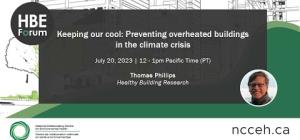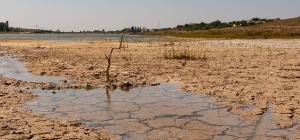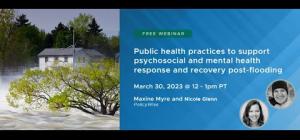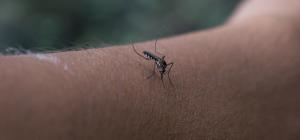
Psychosocial impacts of disasters: Resources for mitigation, response and recovery

Global change due to factors such as climate change, conflict, migration, urbanization, and aging are expected to amplify the public health impacts of disasters. Psychosocial impacts refer to the adverse psychological and social outcomes of a disaster or emergency, and may include:
- Stress and mental health impacts leading to mental injury or illness (post-traumatic stress disorder, depression, anxiety, etc.), sleep disturbance, disrupted concentration, somatic symptoms, or maladaptive behaviors, such as substance abuse (Goldmann and Galea, 2014);
- Deterioration of family relationships as a result of mental illness or family separations due to death, hospitalization, violence, or evacuations;
- Deterioration of social or cultural supports due to the destruction of community rallying points, events, or significant cultural or heritage sites; and
- The loss of meaningful landscapes and relationships with the physical environment that create a form of distress known as solastalgia, which can deeply impact mental health (Eisenman et al. 2015). This form of psychosocial harm is expected to become more prevalent as climate change broadly alters landscapes and our relationship with them (Hayes et al. 2018).
- Some groups, including seniors, children, and Indigenous peoples, are at higher risk of impacts.
In contrast to physical health impacts, psychosocial impacts differ in that:
- Effects may peak well after the original incident has occurred, and may persist over the long term;
- Effects may appear to improve and then worsen repeatedly, following a highly non-linear trajectory to recovery (see pg. 15 of Dewolfe, 2000).
- Effects may impact even those with indirect exposure and/or those distant from the disaster site; and
Resilient communities are less prone to disturbance and recover more quickly afterward. Community-based approaches for resilience include a variety of pre-disaster individual- and community-level interventions to strengthen individual health and the networks of these healthy humans that make up healthy communities. Similarly, after an event has occurred, it is critical not only to monitor and address individual-level psychological impacts, but also repair the higher level networks that create community wellbeing. The first section of this topic page presents a variety of resources introducing the concepts of community resilience and well-being and the types of interventions that can be use pre- and post disaster to build resilience.
In the event of disaster, it may be useful or necessary to screen the population for psychosocial impacts, whether as part of an immediate needs assessment or prioritization, or as the early stages of long-term psychosocial effects monitoring or research. The second section of this topic page presents a list of tools and other resources to assist in rapidly establishing a study protocol to sample the community, screen for psychosocial effects, and provide immediate assistance if necessary. Finally, we have provided some examples of long-term psychosocial monitoring studies from several distinct and highly informative Canadian disaster contexts.
Building community resilience to prevent or mitigate psychosocial impacts
- Intersectoral approaches: the key to mitigating psychosocial and health consequences of disasters and systemic risks (Gousse-Lessard et al., 2022)
This article uses the recent 2017 and 2019 floods in Québec to discuss the cumulative impacts of recurring climate disasters and the need for cross-sectoral perspectives and collaboration to address mental health and psychosocial impacts.
- The “Lac-Mégantic tragedy” seen through the lens of the EnRiCH Community Resilience Framework for High-Risk Populations (Généreux et al., 2018)
This article describes the application of the EnRiCH framework in Lac-Mégantic, with the aim of increasing adaptive capacity after having observed moderate to severe psychosocial impacts. After a day of community reflection, a multisectoral “action plan” was developed to increase resilience and promote health.
- Community wellbeing: applications for a disaster context (Gibbs et al., 2015)
This article provides an introduction to the concepts of community resilience and wellbeing, as well as an overview of academic methods that have been used to assess community well-being.
- Building Resilient Communities: An Online Training (RAND Corporation, 2013)
This free online course provides an introduction to the concept of community resilience and demonstrates the differences between resilience and emergency preparedness. The course suggests a number of actions that a community (or organization) can take to become more resilient, including asset mapping and supporting behavioural health. For best functionality use Google Chrome.
- The Enhancing Resilience and Capacity for Health (EnRICH) Project (Resilience and High-Risk Populations Research Lab, 2011)
This participatory action research project developed a collaborative asset-mapping intervention based on work in five Canadian communities. This is a salutogenic model, meaning that it focuses on developing factors or functional attributes (i.e., assets) that support health, well-being, and coping, rather than simply identifying needs and vulnerabilities (deficits). Instructions for conducting the intervention are found in the EnRICH Community Intervention Manual, which is available in French and English.
Tools for assessing psychosocial impacts and facilitating recovery
- Disaster Psychosocial Services Program (Provincial Health Services Authority, 2023)
This website describes a BC-based program that offers psychological first aid training to volunteer clinicians, registered therapists, and other mental health professionals and para-professionals. Creating a pool of trained professionals enhances resilience in future events.
See also: For a small fee, the Red Cross also offers an online Psychological First Aid course to professionals and the public in both official languages.
- A guide to post-flooding community level psychosocial response and recovery in Canada (Myre and Glenn, 2023)
This NCCEH report summarizes the findings from our pan-Canadian engagement with leaders in emergency response and recovery, which identified seven key public health practices for psychosocial recovery in the wake of a disaster. The accompanying webinar, held on March 30th, 2023, discusses the report’s findings and offers live discussion with an expert panel.
- Post-flooding community-level psychosocial impacts and priorities in Canada: A preliminary report (Glenn and Myre, 2022)
This NCCEH report draws on the literature, practice-based sources and engagement with a pan-Canadian practice advisory committee to reveal some of the experiences, challenges, and priorities for action regarding the psychosocial impacts of floods and community recovery.
- Salutogenesis as a framework for social recovery after disaster (Généreux et al. 2022)
This article describes how using a “salutogenic” approach to recovery has aided in developing a shared understanding of risks and assisted in the long-term social reconstruction. Salutogenesis envisions resilience both in terms of an individuals’ abilities to seek and access resources within their community that will help them recover.
- Disaster Behavioral Health Interventions Inventory (Substance Abuse and Mental Health Services Administration, 2022)
This recently updated inventory provides rapid overview of the many behaviour health interventions that can be implemented at early, intermediate or later (long-term) stages in the recovery.
- Promising initiatives to mobilize the local community in a post-disaster landscape (CIUSSS de l'Estrie – CHUS, 2021)
This updated version of an earlier document by the same name that describes 21 promising initiatives that aimed to heighten community resilience in response to the train derailment using a community-based, salutogenic approach. This is a highly recommended read.
- Health and social impacts of long-term evacuation due to natural disasters in First Nations communities: A summary of lessons for public health (NCCPH, 2021)
This summary document details the public health lessons gained from two case studies of Indigenous communities that experienced catastrophic events necessitating long-term displacement. The cases studies examined the experiences of the Ashcroft Indian Band during the Elephant Hill Wildfire (2017) and the Siksika Nation during the Bow River flood (2013).
- British Columbia Mental Health and Wellness Recovery Toolkit (Health Emergency Management BC, 2021)
This toolkit provides discussion and suggested interventions for mental health and wellness recovery over the immediate, short, medium, and long terms. Although developed for BC, the suggestions and tools offered are easily adaptable to other Canadians jurisdictions. Communication strategies, a household wellness assessment tool, and a tool for assessing the overall adequacy of all existing mental health and wellness supports are provided in the appendices.
- Community Assessment for Public Health Emergency Response (CASPER) Toolkit (US Centers for Disease Control and Prevention, 2020)
This toolkit assists practitioners in quickly and cost-effectively designing, conducting, analyzing, and reporting a scientifically rigorous community needs assessment. Although example here focuses on assessing basic necessities, the CASPER methodology can also be targeted toward psychosocial health data. Built-in statistical rigor facilitates further expansion or extension of the study, if needed, at a later date.
- Post-Disaster Mental Health Impacts Surveillance Toolkit (Institut national de santé publique du Québec, 2020)
This toolkit developed to facilitate post-disaster psychosocial surveillance in Québec. The document identifies a number of Québec- and Canada-wide population-based surveys. It also provides an overview of instruments often used to assess psychosocial and mental health impacts, as well as sample questionnaires in both English and French.
- Psychosocial Disaster Learning Series: Information for Health Professionals (Alberta Health Services, 2020)
This free, online course for health professionals provides in introduction to the basic principles of psychological first aid and self-care in a little over two hours.
- Building on the Basics: Planning for Recreation in Emergency Response and Recovery (Government of Alberta, 2017)
This guide demonstrates the importance of recreational opportunities as a psychosocial support for individuals and communities during and after emergencies. It provides recommendations and considerations for integrating recreation services into the emergency response.
- Core principles for a community-based approach to supporting child disaster recovery (Gibbs et al. 2014)
This article succinctly outlines some of the key mental health and other issues faced by children and youth impacted by disasters, and works to dispel some of the myths around how children respond to disruption. The authors provide seven key principles for the design of interventions that will best engage children and assist them and their families through recovery. The group has also recently published an evidence review psychosocial interventions and disaster recovery programs for children (Gibbs et al. 2021).
- Resources for Responding to Emergencies and Disasters (Canadian Psychological Association, nd)
This website provides a number of specific stress management resources (e.g., for wildfires, floods, terrorism, etc) that are aimed directly at the public, as well as resources for public health practitioners working with seniors.
Examples of psychosocial effects studies from Canadian disasters
The Nathan E. Stewart spill in Bella Bella, Heiltsuk Nation (October 2016)
- Community impacts of fuel spills: a case study from BC’s northern coast (NCCEH, 2016)
This NCCEH webinar presented by Chief Councillor Marilynn Slett (Heiltsuk Nation), Linda Pillsworth (First Nations Health Authority), and Dr. Angela Eykelbosh (NCCEH) on the environmental public health response to the impacts of the marine diesel spill that occurred near Bella Bella on October 13, 2016.
The Fort McMurray Wildfire (May 2016) and Floods (April 2020)
- Evaluating Community Resilience and Associated Factors One Year after the Catastrophic Fort McMurray Flood (Obuobi-Donkor et al., 2022)
This article found that resilience at the individual level was affected by age, pre-existing mental health conditions, and having remained in the house that was previously flooded.
- Five Years after the Fort McMurray Wildfire: Prevalence and Correlates of Low Resilience (Kofi Adu et al., 2022)
This article found that resilience at the individual level was affected by age and pre-existing mental health conditions.
- Psychosocial Response and Recovery Evaluation of the RMWB Wildfire 2016 Final Report (Kulig et al., 2017)
This comprehensive evaluation looks at the implementation and effectiveness of the psychosocial supports that were put in place during the Regional Municipality of Wood Buffalo (RMWB) fire in 2016.
The Lac-Mégantic train derailment (July 2013)
- Monitoring Adverse Psychosocial Outcomes One and Two Years After the Lac-Mégantic Train Derailment Tragedy (Eastern Townships, Quebec, Canada) (Généreux et al., 2019)
This article provides an update on the local public health efforts to monitor health and well-being over time, which showed interesting trends in mental health impacts due to intensity of exposure and emphasized the importance of community-based psychosocial supports.
- Social Reconstruction of the Lac-Mégantic Community Following the Tragedy: Assessment of the First Six Years (CIUSSS de l'Estrie – CHUS, 2019)
This short report summarizes the variety of public health actions taken to understand the impacts of the Lac-Mégantic derailment, and the innovative means taken to promote recovery.
- The 2013 Lac-Mégantic tragedy: The public health response then and now (Généreux, 2016)
This NCCEH webinar (slides only) describes the public health response during and after the Lac Mégantic train derailment tragedy on July 6, 2013. Dr. Généreux’s team retrospectively conducted a comprehensive analysis of direct services provided by her team during the first weeks (i.e. emergency response operations) and months (i.e. recovery operations).
The Southern Alberta Floods (June 2013)
- Psychosocial adaptation to climate change in High River, Alberta: implications for policy and practice (Hayes et al. 2020)
This article analyzes data from social workers and flood survivors regarding the long-term consequences of the disaster and how those learnings can be used to support psychosocial resilience more broadly in the face of climate change.
- Risk and Protective Factors for Mental Health and Community Cohesion After the 2013 Calgary Flood (Hetherington et al., 2018)
This article looks at a geographically wide-ranging sample of residents, where risk of mental health impacts was more related to pre-existing mental health than proximity to the flood zone. However, severe mental health impacts and providing aid to those severely impacted were both associated with an enhanced sense of social cohesion.
- Review and Analysis of the Government of Alberta’s Response to and Recovery from 2013 Floods (MNP LLP, 2015)
This report gives a broad overview of the massive flooding event that affected over 30 communities in southern Alberta in 2013. Through consultation with ministries, municipalities, First Nations, and emergency mangers, the report highlights a number of unmet needs, including failure to adequately integrate or involve psychological and social support resources.
This list is not intended to be exhaustive. Omission of a resource does not preclude it from having value.








